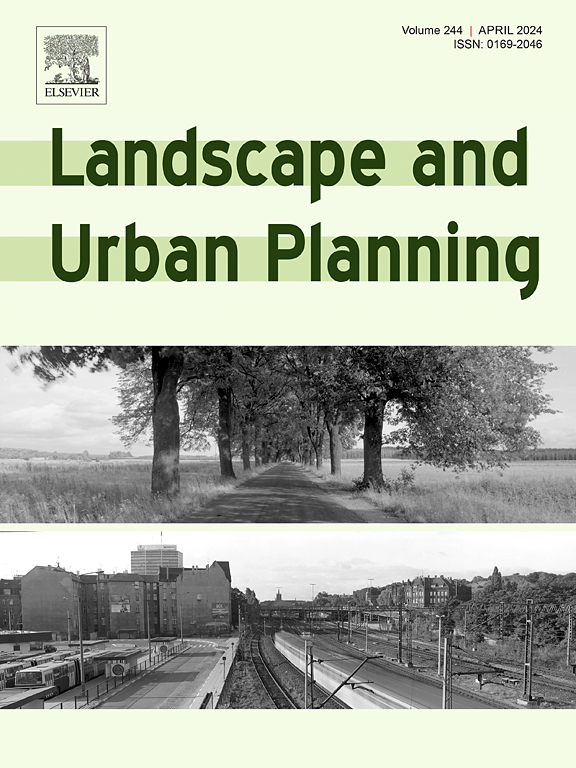热不平等景观:探索西班牙多种空间尺度的气候公正模式
IF 7.9
1区 环境科学与生态学
Q1 ECOLOGY
引用次数: 0
摘要
在过去的四十年里,全球气温出现了普遍、长期的上升,而欧洲正处于这一趋势的前沿,在过去的三十年里,气温上升幅度是全球平均水平的两倍多。而与农村地区相比,城市地区的过热问题要严重得多。本研究调查了南欧的热不平等问题,南欧在很大程度上是一个未被充分研究的地区,面临着巨大的热压力。我们选择了西班牙的五个主要城市,这些城市反映了该国不同的社会人口和环境背景,我们以城市的行政边界作为分析单位。我们使用定制街区来调查多个空间尺度上的热不平等问题。为了说明热不平等模式与居民区社会人口特征之间的关系,我们为每个城市分别估算了三个广义最小二乘法回归模型,结果变量为定制居民区在 300 米、1000 米和 2000 米三个空间尺度上的平均地表温度值。热暴露与居民区特征之间的实际联系似乎对当地的社会、经济、制度、历史和地理环境非常敏感。尽管如此,热暴露与居民社会经济地位之间的联系,以及居民区人口密度与地表温度之间的联系,似乎保持着一致的重要性,尽管分析的空间尺度和采用的分区方法不同,但其重要性往往保持不变。本文章由计算机程序翻译,如有差异,请以英文原文为准。
Landscapes of thermal inequality: Exploring patterns of climate justice across multiple spatial scales in Spain
Over the last four decades, global temperatures have seen a generalized, long-term increase, and Europe is at the forefront of this trend, with temperatures rising by over twice the global average in the past 30 years. And the problem of excessive heat exposure is disproportionately more serious urban areas than it is in rural areas. This study investigates the issue of thermal inequality in Southern Europe, a largely understudied region exposed to substantial heat stress. We selected five major Spanish cities that reflect different socio-demographic and environmental contexts of the country, using the city’s administrative boundaries as our unit of analysis. We used bespoke neighborhoods to investigate heat inequality at multiple spatial scales. To illustrate the relationship between the thermal inequality patterns and the socio-demographic characteristics of neighborhoods, we estimated three separate generalized least squares regression models for each city, with the outcome variable being the average land surface temperature values in bespoke neighborhoods across the three spatial scales: 300 m, 1000 m, and 2000 m. The actual link between heat exposure and neighborhood characteristics appears to be sensitive to the local social, economic, institutional, historical and geographical context. Nonetheless, the connection between heat exposure and residents’ socioeconomic status, as well as the association of neighborhood population density with land surface temperature, seems to maintain consistent significance, often retaining their importance despite the spatial scale of analysis and employed zoning method.
求助全文
通过发布文献求助,成功后即可免费获取论文全文。
去求助
来源期刊

Landscape and Urban Planning
环境科学-生态学
CiteScore
15.20
自引率
6.60%
发文量
232
审稿时长
6 months
期刊介绍:
Landscape and Urban Planning is an international journal that aims to enhance our understanding of landscapes and promote sustainable solutions for landscape change. The journal focuses on landscapes as complex social-ecological systems that encompass various spatial and temporal dimensions. These landscapes possess aesthetic, natural, and cultural qualities that are valued by individuals in different ways, leading to actions that alter the landscape. With increasing urbanization and the need for ecological and cultural sensitivity at various scales, a multidisciplinary approach is necessary to comprehend and align social and ecological values for landscape sustainability. The journal believes that combining landscape science with planning and design can yield positive outcomes for both people and nature.
 求助内容:
求助内容: 应助结果提醒方式:
应助结果提醒方式:


